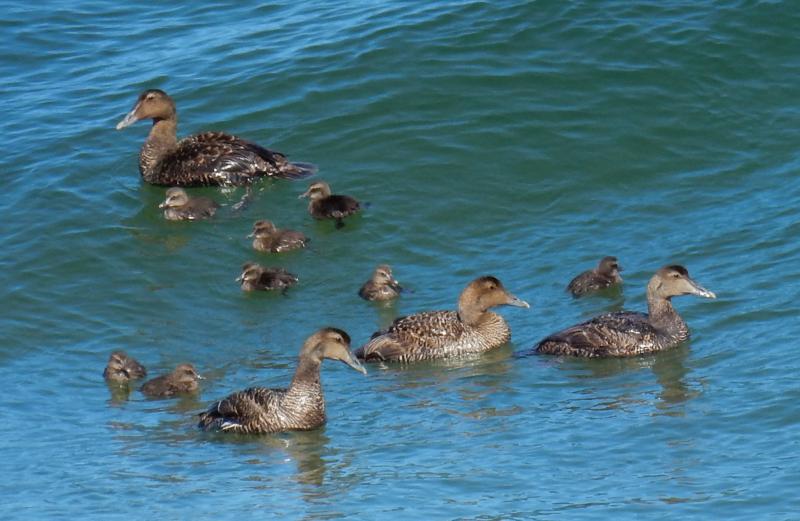We noted in last week’s column that 2018 has been designated The Year of the Bird in celebration of the 100-year anniversary of the enactment of the historic Migratory Bird Treaty Act, the enabling legislation to fulfill the Migratory Bird Convention (Treaty) with Canada. One of the birds of particular concern at the time of the signing of the treaty and the subsequent legislation was one that is seen by many as a signature species of the Maine coast: the common eider. In fact, conservationists were so concerned about the common eider that they even included a special reference to its management in the original treaty, stating that all hunting of common eiders had to be suspended for at least five years.
Common eiders are a large, exclusively marine duck species (although occasionally flocks migrating from the coast of Maine, where they spent the winter, to the St. Lawrence where they breed, will stop off briefly in Maine freshwater lakes and rivers). In the winter, eiders from farther north come down and mingle together with those Maine breeders that stay (some are thought to move a bit farther south). Male eiders depart from their female partner right around the time of nest building and egg laying, and do not participate in any way in nesting or caring for the chicks. Males congregate offshore in late spring and summer where they molt into a female-like plumage and become temporarily flightless while replacing the flight feathers. After a rather long incubation period when the eggs are protected in a bed of downy feathers that the female pulls from her own breast to make the ground nest, the chicks are born fully covered in down and able to feed themselves.
They are remarkable birds!
In the late 1800s and early 1900s here in Maine the common eider could well have been renamed the endangered eider. By some accounts there were only two nesting female eiders left on the coast of Maine in 1907, on Old Man Island off Cutler in Washington County. The National Association of Audubon Societies was just beginning around that time and they began paying wardens to protect seabird nesting islands from human disturbance. Interestingly, the wardens had to keep people off by enforcing “no trespassing” provisions as there were no laws to protect the birds or their eggs or chicks at the time.
But 100 years ago, that changed with the passage of the Migratory Bird Treaty Act. Immediately, a moratorium on hunting eiders was established. In Maine, that moratorium was extended until 1933. By 1944 the Maine breeding population of common eiders had increased to 2,000 nesting pairs on 31 islands. Amazingly, in 1970 there were an estimated 20,000 nests spread across more than 200 islands! Many of the islands in mid-coast Maine today host nesting common eiders, and it is a welcome and common sight to see one or more female common eiders in late May or June surrounded by tiny bobbing downy chicks. Damariscove Island, just off Boothbay and now a property of the Boothbay Region Land Trust, is said to now support the largest nesting colony of common eiders in Maine.
The common eider is one of the countless bird species that might not be here in Maine if it were not for the Migratory Bird Act of 1918.
We celebrate the common eider as a symbol of The Year of the Bird!
Jeffrey V. Wells, Ph.D., is a Fellow of the Cornell Lab of Ornithology. Dr. Wells is one of the nation's leading bird experts and conservation biologists and author of the “Birder’s Conservation Handbook.” His grandfather, the late John Chase, was a columnist for the Boothbay Register for many years. Allison Childs Wells, formerly of the Cornell Lab of Ornithology, is a senior director at the Natural Resources Council of Maine, a nonprofit membership organization working statewide to protect the nature of Maine. Both are widely published natural history writers and are the authors of the popular book, “Maine’s Favorite Birds” (Tilbury House) and the just-released “Birds of Aruba, Bonaire, and Curaçao” from Cornell University Press.






























